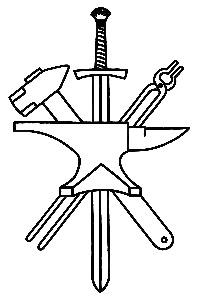Another plasma component...
- phillc54
-
 Topic Author
Topic Author
- Offline
- Platinum Member
-

- Posts: 5711
- Thank you received: 2093
Cheers, Phill.
Please Log in or Create an account to join the conversation.
- rodw
-

- Away
- Platinum Member
-

- Posts: 11468
- Thank you received: 3845
Got it! I thank you guys for your patience.
What's the +- tolerance or how close does the calculated voltage need to be to the raw arc voltage for a good cut?
Well, here is another quote from Jim Colt from Hypertherm. The rule of thumb is that volts change at a rate of about 10 volts per mm.
jimcolt » Sat May 09, 2015 8:30 am
Most height controls accurately control arc voltage to plus or minus about 2-3 volts. For every volt you will see roughly a .004"(0.1mm) change in height (this varies a bit with thickness and power levels). Controlling the arc voltage tighter than this usually creates some oscillation in the z axis, which will show as striations (roughness) in the cut edge.
I think it is funny when THC manufacturers advertise .5 volts accuracy......because the arc voltage itself fluctuates more than this (due to the moving cathode attachment).....which means the height control will oscillate rapidly up/down to try to compensate. In all cases when the edge gets rough because of this oscillation, you need to slow down the z axis speed or deaden the THC reaction time, which ultimately loosens up the voltage deadband to at least the 2-3 volt range. In reality controlling to plus or minus 5 volts is ok on materials thicker than .125".
One of the overlooked components in a THC is the mechanical tightness as well as the lack of "overshoot" of the z axis lifter. A loose lifter requires that the voltage range (deadband) is loosened up, a lifter that does not instantly stop (braking) will do the same. The z axis lifter, properly designed will be the most costly part of any THC.
In my tests sampling bout 16000 readings with hal sampler showed my Everlast changed linearly at 7.53 volts per mm and this variation had very high correlation (>99.5% confidence on the linear regression). I think the other thing going for the THCAD config is that the voltage to frequency algorithm used on the board results in a averaging of the conversion which is improved with the 1/32 frequency division as the THCAD has more time to get a good result.
I really thin LinuxCNC combined with external offsers and THCAD sampling the way Phill has tied it together achives a far better result than Jim describes in this quote.
Please Log in or Create an account to join the conversation.
- AgentWD40
-

- Offline
- Platinum Member
-

- Posts: 334
- Thank you received: 93
jimcolt
One of the overlooked components in a THC is the mechanical tightness as well as the lack of "overshoot" of the z axis lifter. A loose lifter requires that the voltage range (deadband) is loosened up, a lifter that does not instantly stop (braking) will do the same. The z axis lifter, properly designed will be the most costly part of any THC.
That's an interesting bit of info for me to keep in mind as I build. lol, I got about $50 in my z axis lifter!
Please Log in or Create an account to join the conversation.
- rodw
-

- Away
- Platinum Member
-

- Posts: 11468
- Thank you received: 3845
You remind me of Tommy. Hes the expert of ghetto builds!Fantastic info. Thank you.
That's an interesting bit of info for me to keep in mind as I build. lol, I got about $50 in my z axis lifter!
Well it took me 3 months to build mine.
I figured If I could make that, I could make everything else!
If I did it again I'd buy a prebuilt stage and a breakaway.
Please Log in or Create an account to join the conversation.
- phillc54
-
 Topic Author
Topic Author
- Offline
- Platinum Member
-

- Posts: 5711
- Thank you received: 2093
I have about AUD80 in mine plus some time and scrap bin parts for the breakaway and float switch.That's an interesting bit of info for me to keep in mind as I build. lol, I got about $50 in my z axis lifter!
Cheers, Phill.
Please Log in or Create an account to join the conversation.
- JTknives
-

- Offline
- Elite Member
-

- Posts: 243
- Thank you received: 32
I certainly wouldn't argue with checking its calibration. I checked my thcad-10 with a 9.5v wall wart and a voltage divider circuit with a potentiometer. I checked it at several different voltages over the 10v range. The calculated voltage using Mesa's calibration frequencies matched my multimeter within 0.1 volts. Speaking just from my gut I think I trust mesa's calibration better than my multimeter. it's a cheapo meter, so I suppose that's the best I can do.
[edit]
Maybe another calculator for the user to plug in a series of their own frequency vs known voltage pairs and do a simple linear regression? let the user decide what they trust. I'm just thinking about convenience for the user. I would offer to do it but I know squat about gui programming in linux... maybe it's a good time to learn though
[edit x2]
Here's my test data. It was closer to +-0.03 volts, not 0.1v.
Oh crap, I completely forgot to write down the calibration numbers on the back of my board before I installed it. I would bet my voltages are a good bit off. What I did was subtract the voltage it displayed when at zero volts (this was jumping all over +-20v). Then adjusted the other number till it showed what my volt meter showed. looks like its time to dig into the controller and get a peak at that label.
Please Log in or Create an account to join the conversation.
- AgentWD40
-

- Offline
- Platinum Member
-

- Posts: 334
- Thank you received: 93
Please Log in or Create an account to join the conversation.
- JTknives
-

- Offline
- Elite Member
-

- Posts: 243
- Thank you received: 32
Please Log in or Create an account to join the conversation.
- JTknives
-

- Offline
- Elite Member
-

- Posts: 243
- Thank you received: 32
Please Log in or Create an account to join the conversation.
- rodw
-

- Away
- Platinum Member
-

- Posts: 11468
- Thank you received: 3845
Please Log in or Create an account to join the conversation.

